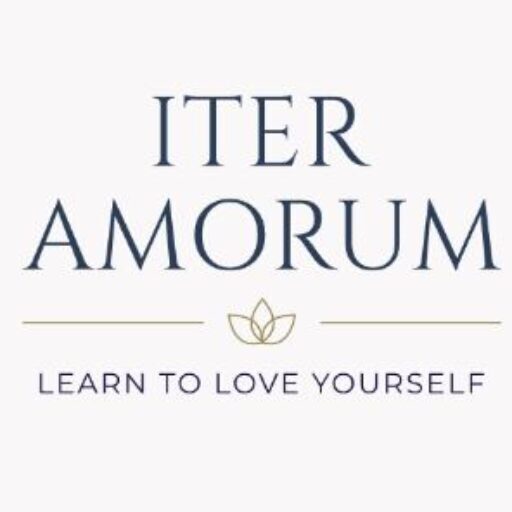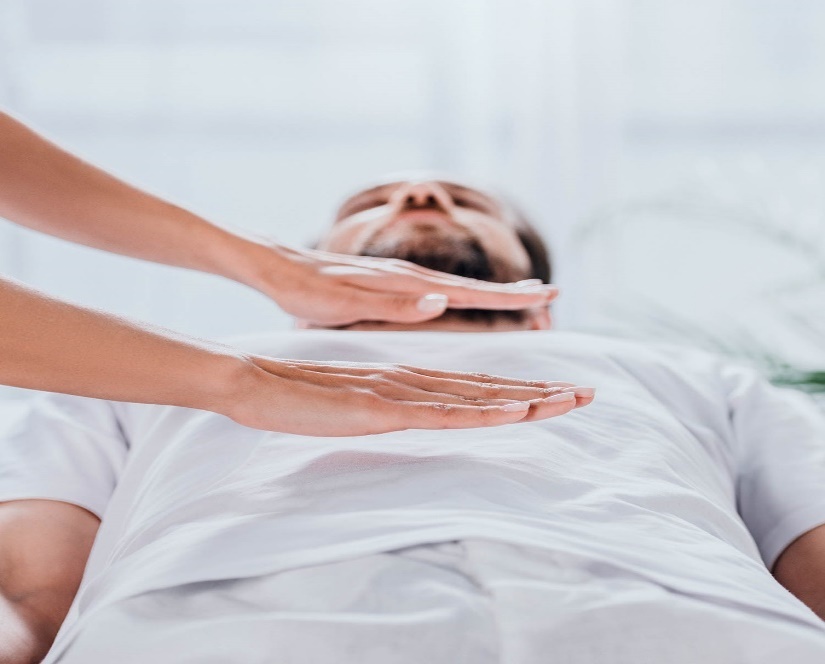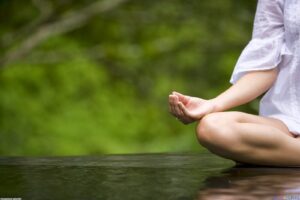Published on September 29, 2024
Of Religion and Health
(with a particular emphasis on the analysis of three articles about the effects of Reiki therapy in diverse medical contexts)
- Introduction and Objective
Reiki, a complementary therapy that became well-known in America and European countries, has been used to treat several types of affection, from the ones that are not life-threatening, such as anxiety or chronic fatigue, to the fatal ones, such as cancer.
Promoted initially in Japan, Reiki finds its roots in the Buddhist religion (see Cambridge Dictionary for the definition) that follows the idea that Chi, the universal energy, moves and unites the things of the entire world, in other words, everything is connected at a higher level so that this invisible web acts as a binder.
Transmitted from a Master to his / her / them disciples, Reiki has a long story (starting with its initiator, Mikao Usui) but a controversial one, for being considered a way to heaven or a path to hell (CNA).
Despite this situation, Reiki therapy which operates with the hands of the practician, seen as a transmitter of Chi energy to the receiver, is nowadays used in hospitals and palliative centers with the purpose to improve patients’ lives.
Being such an arguable domain that has its beginning in the Buddhist religion, Reiki has been the subject of many scientific articles that tried to prove its meaningless or its importance, culminating with the Guidelines for Evaluating Reiki as An Alternative Therapy, a document issued in 2009 by Committee on Doctrine United States Conference of Catholic Bishops that stipulates that “Some forms of Reiki teach of a need to appeal for the assistance of angelic beings or “Reiki spirit guides.” This introduces the further danger of exposure to malevolent forces or powers.” (GUIDELINES for EVALUATING REIKI as an ALTERNATIVE THERAPY Committee on Doctrine United States Conference of Catholic Bishops)
But this paper will focus not on the Catholic point of view regarding Reiki, but on three scientific articles that analyse this therapy from the perspective of facts, which can provide measurable results sustaining that Reiki is an alternative medical therapy.
Two of these articles were published in 2019 and the other one in 2020, putting a distance of 10 years between the Church’s point of view and the scientific approach that tries to offer an objective perspective of what Reiki is in today’s world.
Did these articles prove that Reiki is a legitimate alternative medical therapy that can be used successfully in treating or at least improving health?
Are these sources credible? Do they solve completely the argument that Reiki is suitable for a Christian that goes to Church every Sunday, prays, and fasts during Advent?
- Results
In choosing the articles (Bondi et al.; Naser Shirani, Abdolghani Abdollahimohammad, Mohammadreza Firouzkouhi, Nosratollah Masinaeinezhad, Aziz Shahraki-Vahed; Sieglinder Larissa Beul, Luciana Vannucci, Léia Fortes Salles, Ruth Natalia Teresa Turrini) for this paper, unreliable sources have been eliminated such as Internet pages, subjective approaches, religious presentations, facts that cannot be measured by experiments, and fictitious points of view.
I used Google Scholar by paying attention to the articles that have been published in medical journals and by searching for the following keywords: Reiki, scientific articles, evidence, cancer, and pain.
This brief research has included three articles (above cited) that provided quantifiable outcomes, which presented the used methods and the obtained results.
The articles address the subject of Reiki about various health issues such as rheumatoid arthritis, pain and anxiety in women hospitalized for obstetrical- and gynaecological-related conditions and chemotherapy-related biopsy choemotional signs and symptoms.
The purpose of these articles is to offer an answer to the question if Reiki is an alternative medical therapy that can control pain and can improve the symptoms of some medical conditions.
The methods used in these three articles are a demographic information questionnaire, a quality of life questionnaire (SF-36), the Visual Analogue Scale (VAS) for pain, a Likert-type scale of 0 to 10 to measure pain and anxiety, a survey asking about lingering effects of treatment, an integrative review guided by a question, and a search undertaken in the databases.
All articles stipulated the same conclusion that Reiki has positive and lingering effects in the case of patients suffering from critical medical affection.
- Critical Appraisal
I have used the CAT-Manager app to critically appraise this study, and this is the outcome:
The study design is a Cross-sectional study. This design is not appropriate (level D) to measure an effect, impact or causal relation.
The study contains 3 serious weaknesses:
1. The sample size was not randomly selected
2. The sample size was not large enough
3. The method of measurement was unclear or unreliable
In addition, the effect size is medium and the precision is good.
Based on this result you should conclude that the trustworthiness of the study is very low (55%).
This means there is a 45% chance that alternative explanations for the effect found are possible.
The articles are based on questions, and empiric methods that use observation, and this fact does not confer a strong and infallible perspective on Reiki. More than this, the participants in these studies are people with critical medical conditions for whom even a small piece of hope will make them feel better.
No medical tests were performed to sustain the results.
- Discussion
While not 100% dependable, these three studies bring to our attention a significant problem in our society: many people with chronic or fatal health conditions, whose solution could not be found by allopathic medicine, turn towards other forms of treatment in hope that they will find relief to their conditions.
Though rejected by Catholic Church (and, I may say by knowing the situation in my country, Romania) by Eastern Orthodox Church in equal measure, Reiki is used with some success (as the articles highlight) in diverse types of medical conditions offering a positive outcome.
Reiki, needing no medical advanced device to be applied, can be performed anywhere and anytime and to anyone who is in pain or just simply needs care. This therapy can be included as a benefit for those who work in the office for long periods of time and they feel a lack of energy, or can be introduced in kindergartens and in schools for children with ADD or with ADHD (maybe, being too small, they won’t know what is Reiki, but certainly they will sense the love and affection).
Even if these benefits are the results of a placebo effect or they are viable for a very short period, it is not our duty as humans to provide to our peers what stays in our power to offer them well-being.
Bibliography
- Bondi, Ann, et al. “Effects of Reiki on Pain and Anxiety in Women Hospitalized for Obstetrical- and Gynecological-Related Conditions.” Journal of Holistic Nursing, 3 July 2020, p. 089801012093643, 10.1177/0898010120936437. Accessed 23 Sept. 2020.
- Cambridge Dictionary. “Buddhism.” @CambridgeWords, 23 Nov. 2022, dictionary.cambridge.org/dictionary/english/buddhism?q=Buddhism. Accessed 30 Nov. 2022.
- CNA. “Bishops’ New Guidelines Condemn Reiki Therapy as “Superstition.”” Catholic News Agency, www.catholicnewsagency.com/news/15518/bishops-new-guidelines-condemn-reiki-therapy-as-superstition. Accessed 30 Nov. 2022.
- GUIDELINES for EVALUATING REIKI as an ALTERNATIVE THERAPY Committee on Doctrine United States Conference of Catholic Bishops. 2009.
- Naser Shirani , Abdolghani Abdollahimohammad, Mohammadreza Firouzkouhi, Nosratollah Masinaeinezhad, Aziz Shahraki-Vahed. “The Effect of Reiki Energy Therapy on the Severity of Pain and Quality of Life in Patients with Rheumatoid Arthritis: A Randomized Clinical Trial Study.” Medical Science, vol. 96, no. 23, Apr. 2019.
- “Reiki.” NCCIH, www.nccih.nih.gov/health/reiki.
- Sieglinder Larissa Beul, Luciana Vannucci, Léia Fortes Salles, Ruth Natalia Teresa Turrini. “REIKI in the RELIEF of CHEMOTHERAPY-RELATED BIOPSYCHOEMOTIONAL SIGNS and SYMPTOMS.” Revista Cogitare Enfermagem, no. 24, 2019.
“Reiki.” NCCIH, www.nccih.nih.gov/health/reiki. ↑




